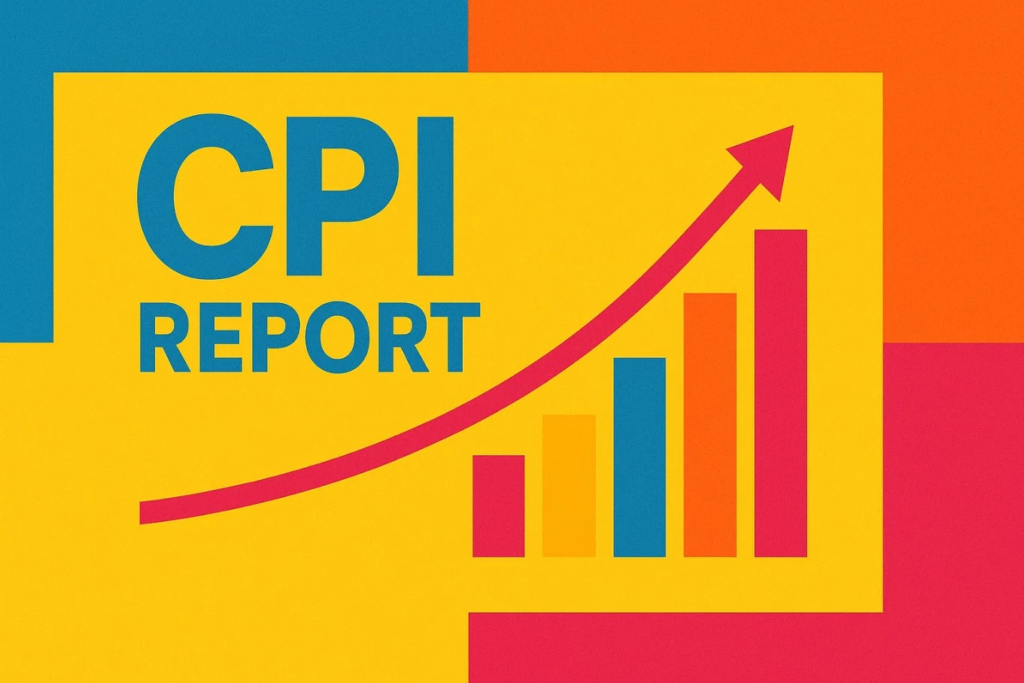In April 2025, the U.S. Consumer Price Index (CPI) rose by 2.3% compared to the previous year, marking the lowest annual inflation rate since February 2021. This cooler-than-expected reading, down from 2.4% in March, has sparked cautious optimism among consumers, policymakers, and economists. However, the shadow of President Donald Trump’s tariffs looms large, with experts предупреждать that price pressures could soon heat up. At the same time, softening consumer demand may temper the inflationary impact, creating a complex economic picture. Let’s break down what this means for Americans and what lies ahead.

A Closer Look at the April CPI Numbers
The CPI, a key measure of the average change in prices for goods and services, increased by just 0.2% from March to April, according to the Bureau of Labor Statistics. This was milder than the 0.3% monthly rise economists had predicted. On an annual basis, the 2.3% increase was slightly below the 2.4% forecast, offering a rare moment of relief for households grappling with rising costs.
Core CPI, which excludes volatile food and energy prices, held steady at 2.8% year-over-year, aligning with expectations. This stability suggests that underlying inflation pressures remain, but they haven’t yet surged as some feared. Specific categories showed mixed trends: food prices dipped slightly, with groceries offering some respite, while the meats, poultry, fish, and eggs index jumped 7.0% over the past year, driven by a staggering 49.3% spike in egg prices. Gasoline prices fell 0.1% month-over-month and 12% year-over-year, reflecting weaker energy demand. Meanwhile, shelter costs, a major CPI component, rose 4% annually, continuing to strain household budgets.

Tariffs: The Inflation Wildcard
President Trump’s trade policies have been a focal point in economic discussions, particularly his tariffs on imports. In early April, the administration imposed a 145% tariff on Chinese goods, effectively halting much of the trade with the U.S.’s third-largest trading partner. However, a recent 90-day pause reduced these tariffs to 30%, while a baseline 10% tariff remains on most other trading partners. Despite this easing, the Yale Budget Lab estimates that the average effective tariff rate is still 17.8%, the highest since 1934.
Economists warn that tariffs, which act as taxes on imported goods, are likely to push prices higher in the coming months. U.S. companies typically pass these costs to consumers, which could drive up the cost of everything from apparel to electronics. Samuel Tombs, chief U.S. economist at Pantheon Macroeconomics, noted “the first clear evidence of upward pressure” on goods prices in the April data. Used car prices, for instance, are already climbing, with wholesale prices rising in response to a 25% tariff on imported vehicles. This trend could intensify, as demand for domestic used cars grows.
Nationwide senior economist Ben Ayers called April’s CPI “the low point in 2025,” predicting a summer surge as tariff costs filter through supply chains. Kathy Bostjancic, also from Nationwide, estimates that inflation could hit 3.4% by year-end, even with the reduced tariffs on China. This outlook has left the Federal Reserve in a wait-and-see mode, with Chair Jerome Powell emphasizing the need to monitor how tariffs affect long-term inflation expectations.

Consumer Demand: A Double-Edged Sword
While tariffs threaten to stoke inflation, weakening consumer demand could soften the blow. The University of Michigan’s consumer sentiment index plummeted to its second-lowest level on record in April, with year-ahead inflation expectations jumping to 7.3%. This pessimism reflects widespread anxiety about the economy, fueled by tariff uncertainty and recession fears. Retail sales growth slowed sharply in April, rising just 0.1% after a 1.7% surge in March, as households pulled back on spending.
This cautious behavior may be partly due to front-loading purchases in March, when consumers and businesses rushed to buy goods like vehicles before tariffs took effect. However, the slowdown in core retail sales (excluding autos, gasoline, and food services) by 0.2% signals broader hesitation. Services like air travel and hotels also saw price drops, with airfares falling 1.5% and hotel prices declining 3.1%, likely due to reduced demand amid economic jitters.
Oliver Allen, senior U.S. economist at Pantheon Macroeconomics, suggested that consumer surveys might be overly gloomy, pointing to the modest retail sales gain in April as evidence of resilience. Still, the combination of higher prices and economic uncertainty could further dampen spending, potentially capping how much businesses can raise prices without losing customers.
The Federal Reserve’s Balancing Act
The Federal Reserve finds itself in a tricky position. With inflation edging closer to its 2% target, the April CPI report might seem like good news. However, the looming tariff-driven price hikes and mixed signals from consumer demand complicate the path forward. The Fed held interest rates steady in May, citing uncertainty about tariffs’ effects. Powell has warned that tariffs, like other supply shocks, could lead to higher long-term rates if inflation expectations rise.
Economists like Gregory Daco from EY have adjusted their forecasts, now expecting inflation to reach 3.2% by year-end, down from earlier projections of 3.6%, thanks to the U.S.-China trade truce. Daco predicts the Fed may cut rates twice in 2025, rather than the three cuts initially anticipated, as it navigates this volatile landscape. For now, the central bank appears content to wait for clearer data, particularly as tariff impacts become more evident in the May and June CPI reports.
What This Means for Everyday Americans
For the average American, the April CPI report offers a brief reprieve. Lower food and gas prices provide some relief at the grocery store and the pump, but rising shelter costs and egg prices are a reminder that inflation isn’t gone. The prospect of tariff-driven price hikes adds another layer of concern, particularly for budget-conscious households. Retail giants like Walmart have already signaled plans to raise prices, despite Trump’s urging to “eat the tariffs.”
On the flip side, softening consumer demand could keep price increases in check, as businesses hesitate to alienate cost-sensitive customers. This dynamic creates a delicate balance: while inflation may rise, it might not skyrocket as much as feared if spending continues to cool.
Looking Ahead: A Bumpy Road
The April 2025 CPI report paints a picture of an economy at a crossroads. Inflation is cooling for now, but tariffs are poised to reignite price pressures, potentially pushing core CPI higher. Consumer demand, battered by uncertainty, could act as a brake on inflation but also risks tipping the economy toward slower growth. As Ben Ayers put it, “Soak this report in. It’ll be a while before we get another good one.”
For policymakers, businesses, and households, the next few months will be critical. The May CPI report, due in June, will offer the first real glimpse of how tariffs are reshaping prices. Until then, Americans are left to navigate a landscape of cautious hope, tempered by the knowledge that economic challenges are far from over.
Read More :- Student Loan Defaults Surge as Collections Resume, Impacting Millions





